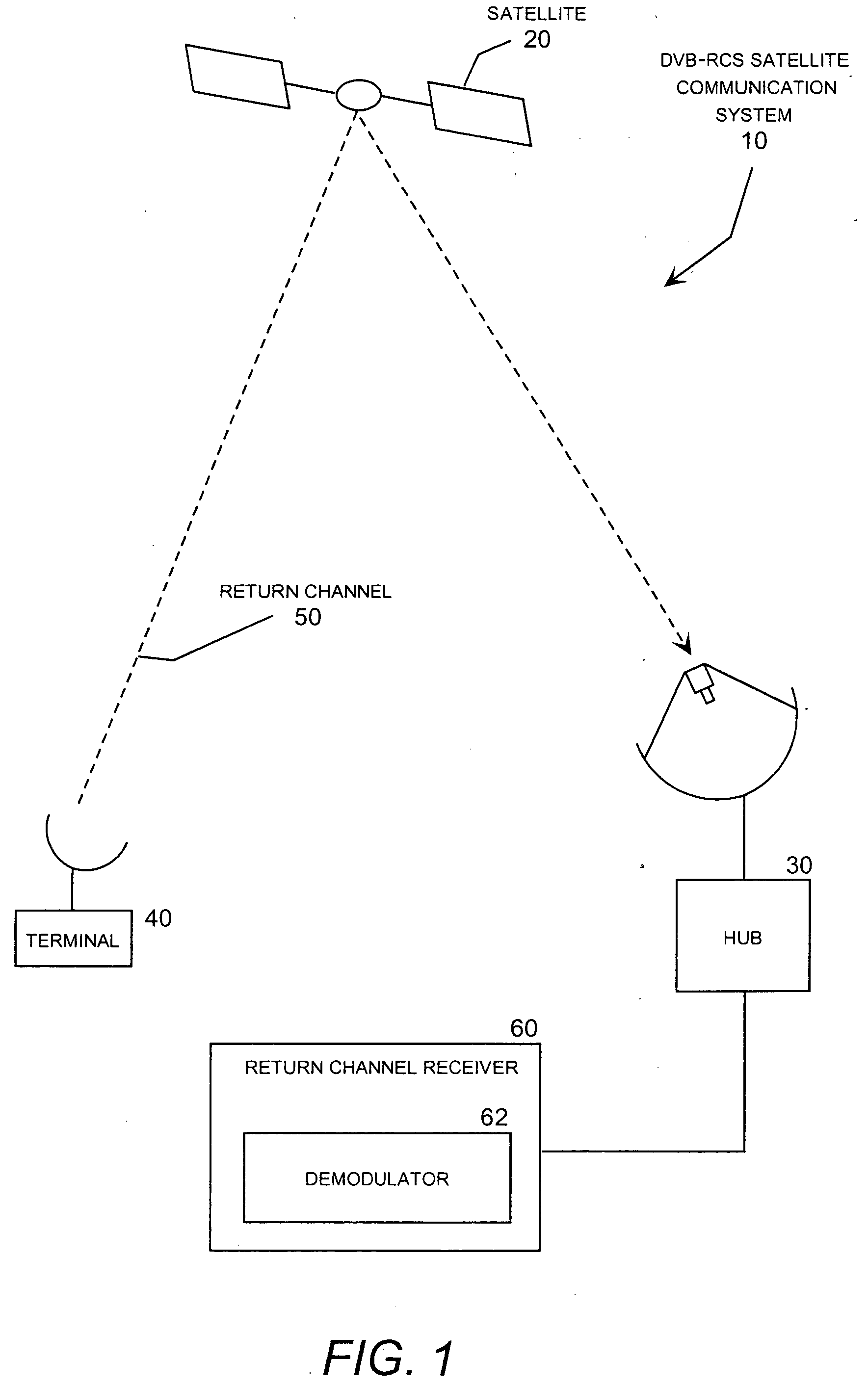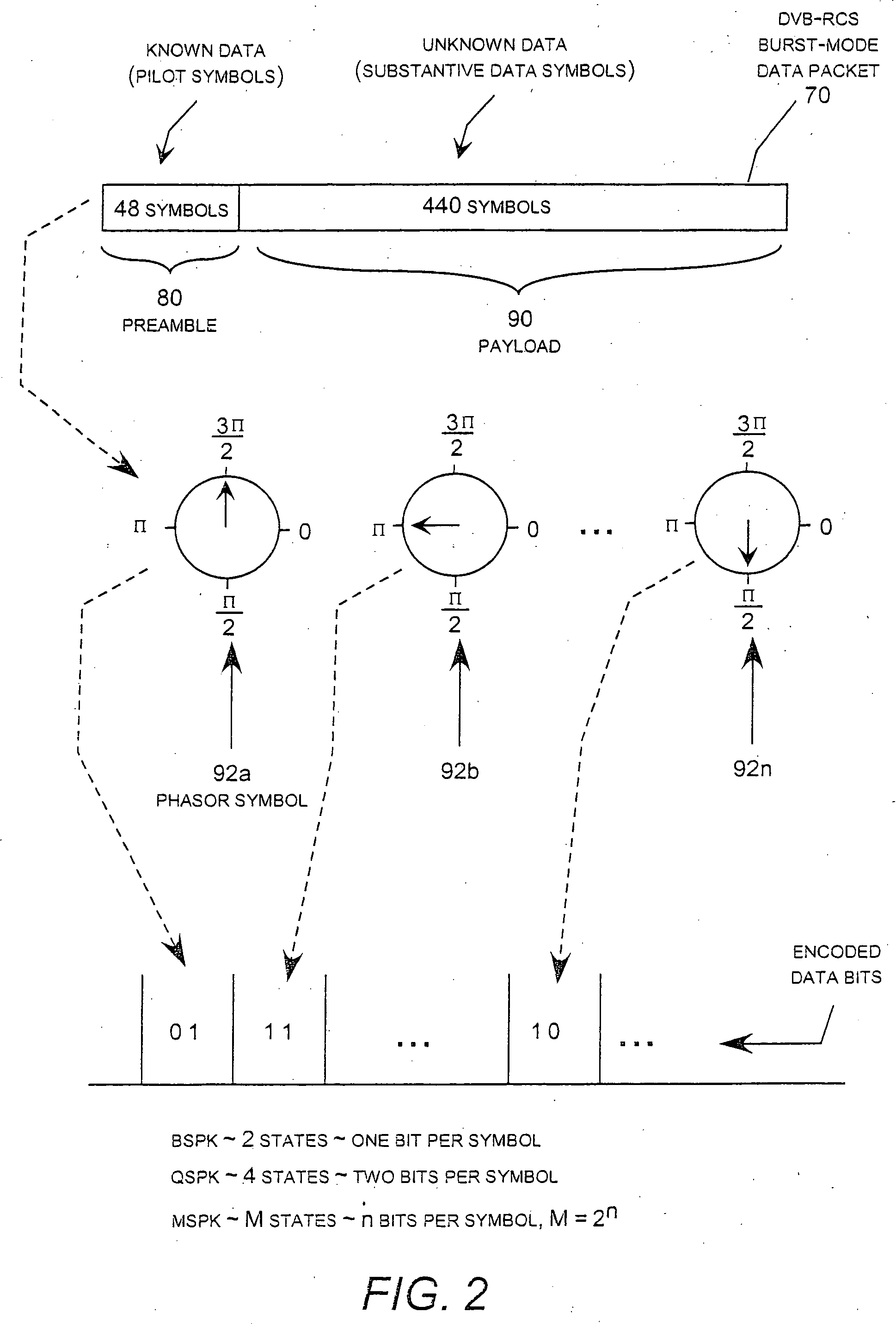Hybrid frequency offset estimator
a frequency offset and estimator technology, applied in the field of hybrid frequency offset estimators, can solve problems such as increasing likelihood, and achieve the effect of improving the performance of the frequency estimator
- Summary
- Abstract
- Description
- Claims
- Application Information
AI Technical Summary
Benefits of technology
Problems solved by technology
Method used
Image
Examples
Embodiment Construction
[0066] The present invention is shown in the accompanying figures and described below as a hybrid carrier frequency offset estimator within a return channel receiver in a DVB-RCS system using turbo coding and quadrature phase shift key (QPSK) data modulation. In this system, the invention is employed to estimate signal distortion caused by carrier frequency offset so that this particular source of signal distortion can be removed to improve the ability of the receiver to maintain synchronization in low signal-to-noise conditions. This, in turn, allows the receiver to meet the DVB-RCS performance target without increasing the transmission power of the return channel transmitter. Of course, carrier frequency offset is an important source of signal distortion in any communication system using a phase shift keying modulation technique because the carrier frequency offset directly influences the phase characteristic of the modulating signal. Nevertheless, it should be appreciated that th...
PUM
 Login to View More
Login to View More Abstract
Description
Claims
Application Information
 Login to View More
Login to View More - R&D
- Intellectual Property
- Life Sciences
- Materials
- Tech Scout
- Unparalleled Data Quality
- Higher Quality Content
- 60% Fewer Hallucinations
Browse by: Latest US Patents, China's latest patents, Technical Efficacy Thesaurus, Application Domain, Technology Topic, Popular Technical Reports.
© 2025 PatSnap. All rights reserved.Legal|Privacy policy|Modern Slavery Act Transparency Statement|Sitemap|About US| Contact US: help@patsnap.com



